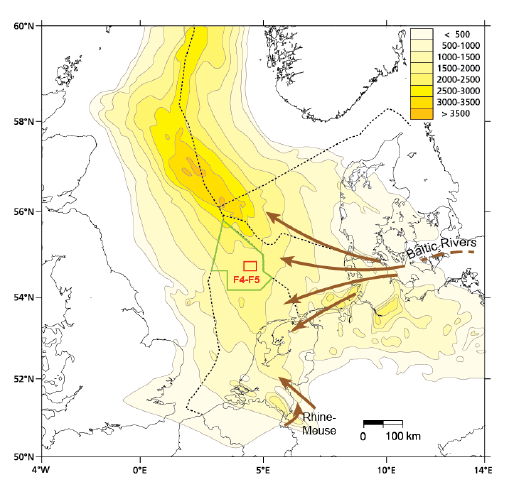Regional Understanding of the Cenozoic “Shallow Gas” Play of Blocks F4 & F5

In the Southern North Sea, shallow gas is defined as gas that resides in shallow marine to continental (deltaic) deposits of the Cenozoic Southern North Sea shelf-edge delta. It is either structurally trapped in anticlines above salt domes, associated with lateral fault seals, or occurs in stratigraphic or depositional traps. Traditionally, shallow gas occurrences were regarded as hazardous or non-economic because of low gas saturations (“fizz gas”). Even though the production of shallow gas still is a challenge, to date, four gas fields are producing.
Numerous studies link the occurrence of potential gas (or rather the acoustic anomalies) to specific delta sub environments and stratigraphic intervals. They related variations in sediment properties to changing climate conditions under the inception of Late Cenozoic northern hemisphere glaciations. These studies were instrumental in illustrating and promoting an improved understanding of external controls on shelf delta deposition, reservoir and seal properties and the distribution of organic material. All to the benefit of exploration and production of shallow gas.
However, as reservoir properties and seal capacities are generally poor, the source of the HC is not always understood the Cenozoic HC plays are still not matured to a level that warrants successful exploration. Most critical factors are the origin of the gas and estimating gas saturations prior to drilling. Moreover, production remains challenging (unpredictable) because of the limited strength of the unconsolidated sandy reservoirs, early water breakthrough and sand production.
The current study has aimed to synthesize the regional framework for variations of reservoir, seal and source properties as has been established through research in the last two decades in the Southern North Sea Basin. It has integrated these findings with (new) data and knowledge from the F4/5 blocks to generate a well-documented and illustrated portfolio of (yet) unproven gas occurrences and will provide guidelines for further research and/or exploration of the area under investigation.
